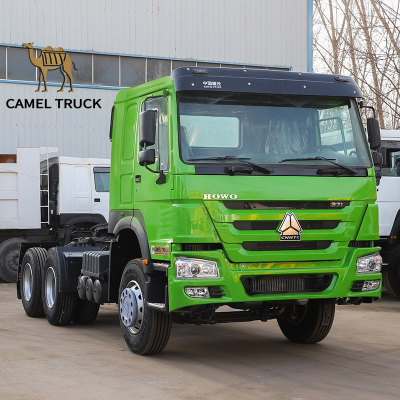The Growing Appeal of Remanufactured Engine Trucks
The trucking industry is changing quietly but decisively. For years, buyers had to choose between new trucks, which require large investments, or used trucks, which often come with hidden risks. Now a new option is rising in popularity: remanufactured engine trucks.
Unlike secondhand trucks that only receive surface repairs, remanufactured trucks go through a strict process: complete disassembly, inspection, replacement of worn parts, cleaning, reassembly, and testing. The result is a vehicle that performs close to a new one, but at a much lower price.
From Africa to Southeast Asia, customers are increasingly choosing remanufactured trucks. The reasons can be grouped into three main advantages: cost-effectiveness, reliability, and after-sales support.
1. Cost-Effectiveness
For any fleet manager, capital is the biggest challenge. Buying a new heavy-duty truck can cost hundreds of thousands of dollars, often requiring loans with high interest rates. For many companies, this slows down growth.
Remanufactured trucks are far more affordable, usually only a fraction of the price of a new one. Yet they deliver similar performance standards. Lower investment means faster returns, easier fleet expansion, and less financial pressure.
For example, a logistics company in West Africa can buy three remanufactured dump trucks for the price of one new truck. That immediately increases their carrying capacity and competitiveness in the market. In regions where every dollar matters, affordability is not just an advantage — it is essential for survival.
2. Reliability Comparable to New Trucks
Some customers worry that “remanufactured” means unreliable. But the opposite is true. Remanufacturing follows strict quality standards.
Engines are completely stripped down, cleaned with ultrasonic machines, and polished by hand.
Any part with more than 25% wear is replaced with new components.
Engines are tested under simulated real-world conditions, such as uphill hauling and long-distance driving.
These steps ensure that remanufactured trucks can handle tough working environments, from mining sites to construction roads. Downtime is reduced, operating costs remain stable, and businesses can rely on their trucks just as they would with new ones.
3. Spare Parts and Local Expertise
Even the best truck needs maintenance. What matters is how quickly and affordably it can return to work. This is where remanufactured trucks, especially HOWO and SHACMAN, stand out.
Over the past decade, Chinese manufacturers have built strong service networks in Africa, the Middle East, and South America. Parts are widely available at competitive prices, and workshops are familiar with the models. Many local mechanics are trained specifically in handling remanufactured trucks, which means repairs are faster and more reliable.
For customers, this creates peace of mind: they are not buying a truck alone, but also gaining access to a global support ecosystem.
4. Sustainable Choice
Another benefit is environmental. By reusing existing trucks and extending their life, remanufacturing reduces the need for raw materials and lowers emissions. For companies that want both profit and responsibility, this is a smart choice.
Conclusion
The rise of remanufactured engine trucks shows how the trucking industry is evolving.
They are affordable, allowing businesses to grow faster.
They are reliable, thanks to strict rebuilding processes.
They are backed by parts availability and skilled service networks.
They support sustainability, reducing waste and resource use.
For many buyers, remanufactured trucks are no longer a second-best option. They are the practical, future-focused choice for building fleets and growing businesses.













